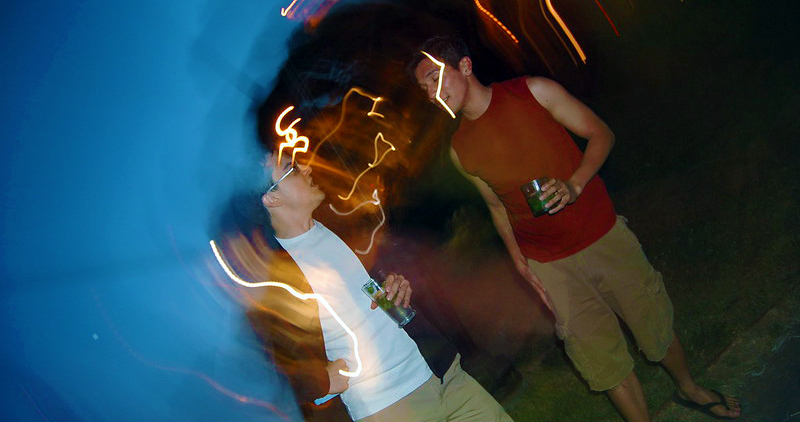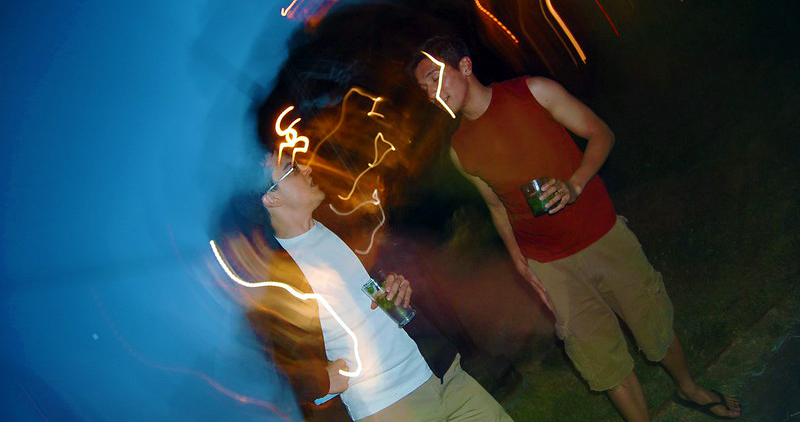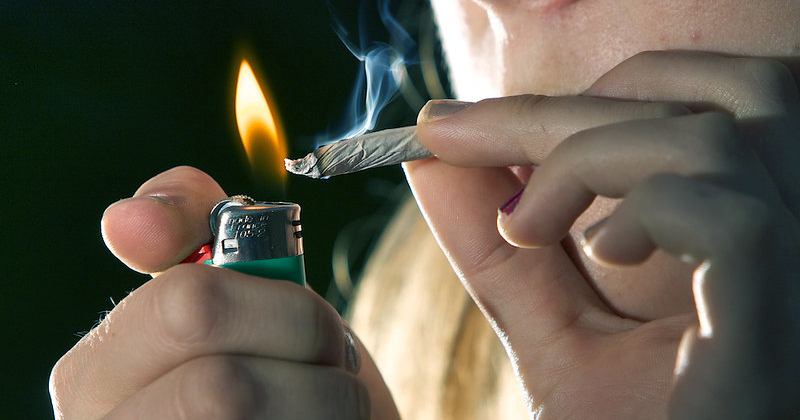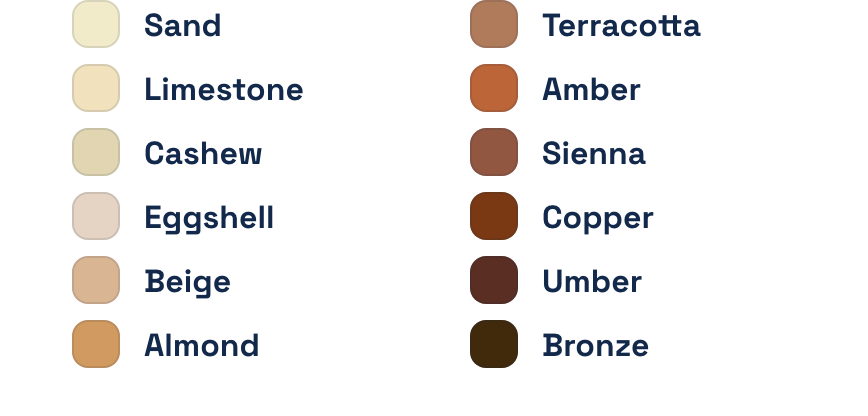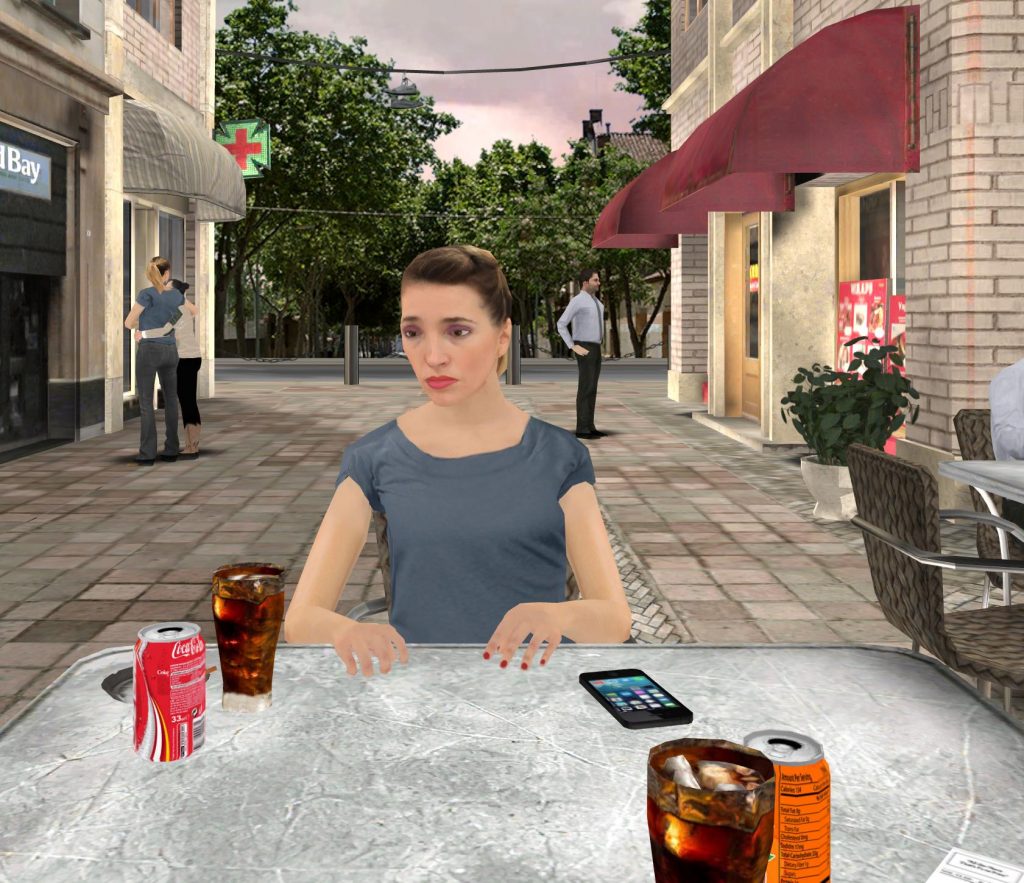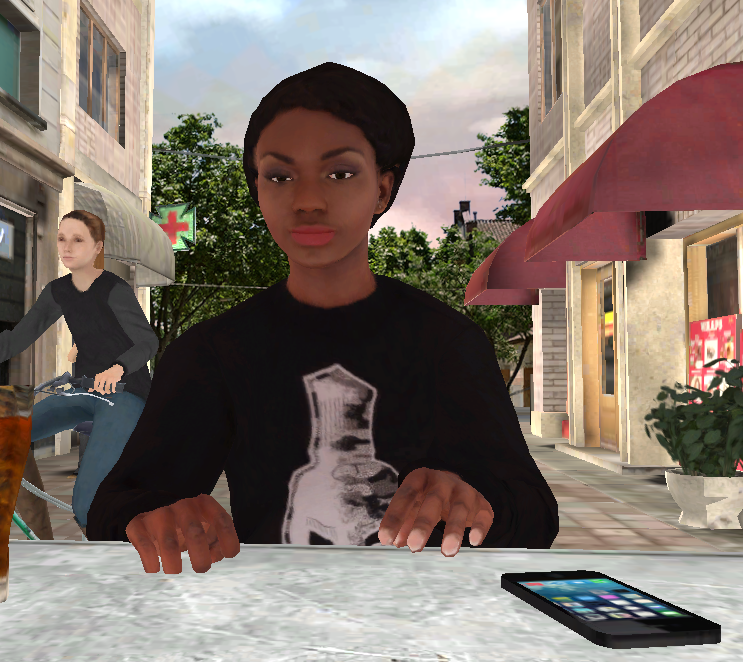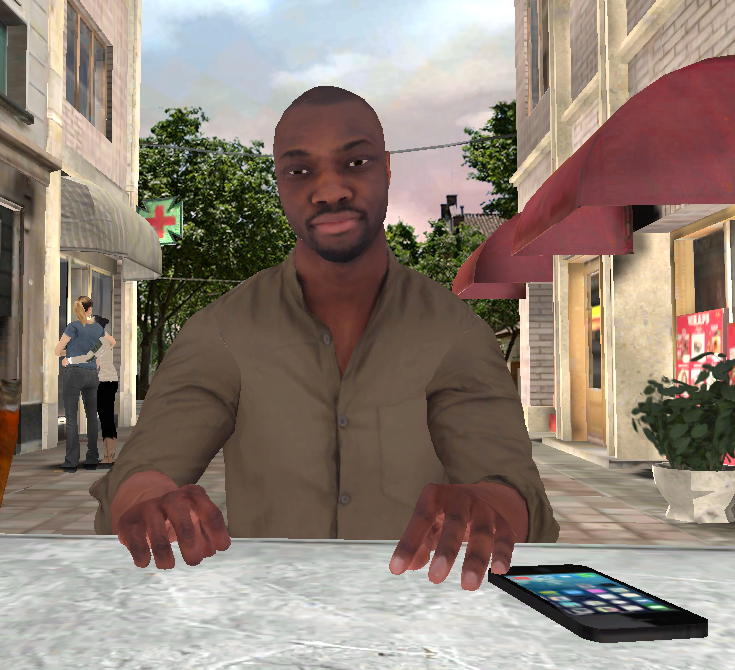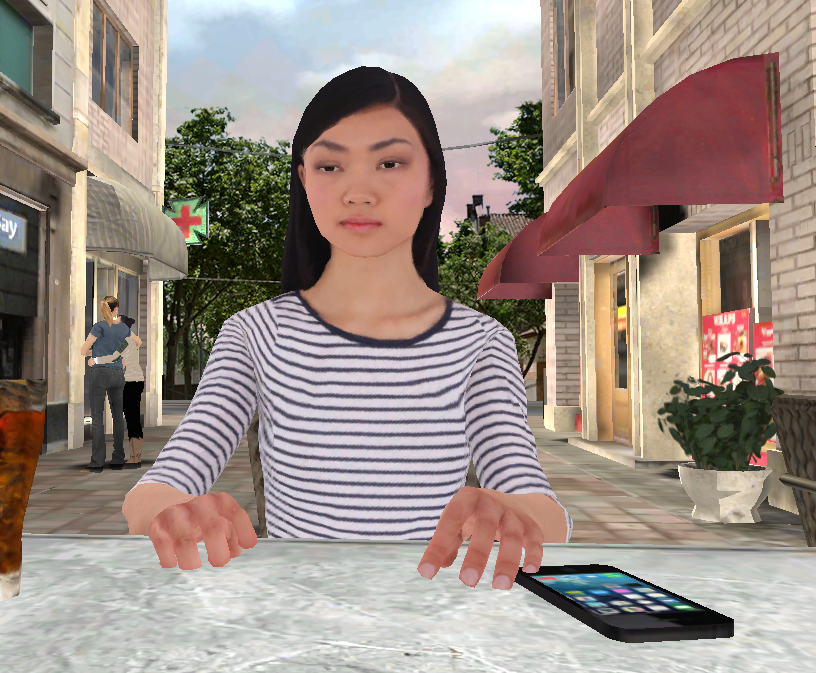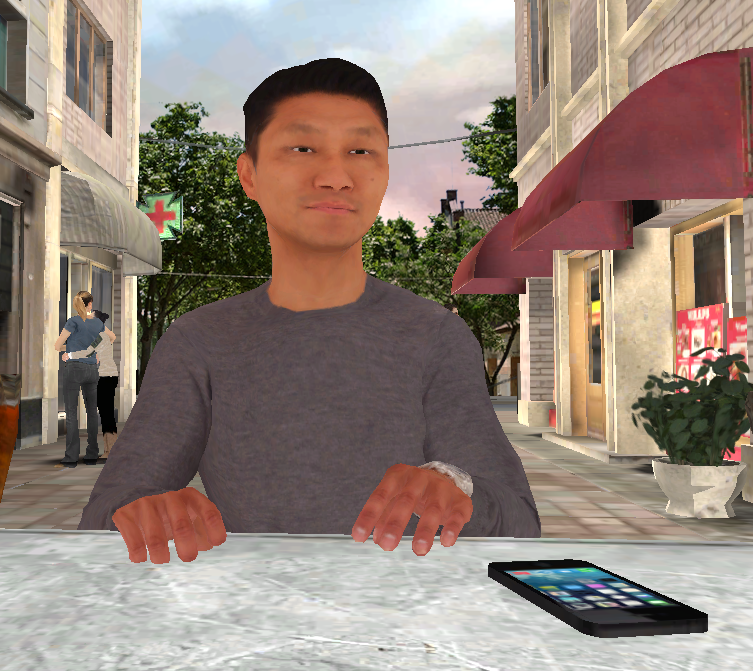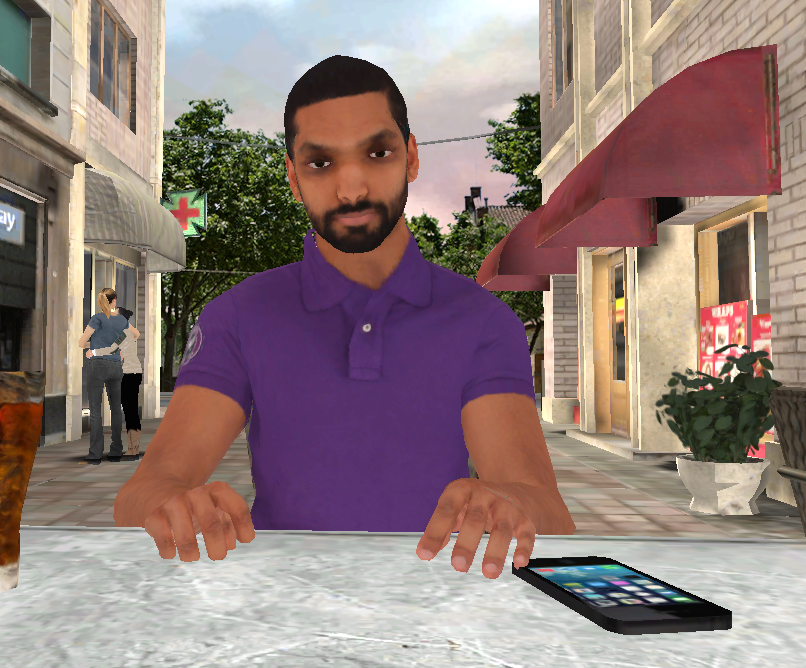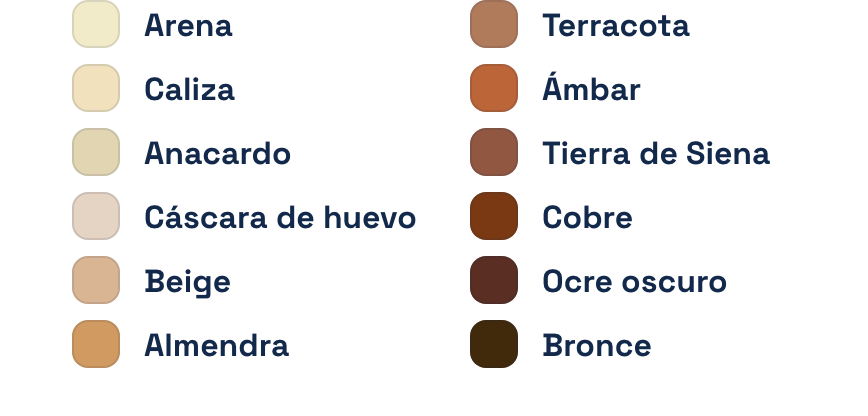Intervention proposal

“All the information contained in this section is for guidance only. Psious environments are therapy supporting tools that must be used by the healthcare professional within an evaluation and intervention process designed according to the characteristics and needs of the user.
Also remember that you have the General Clinical Guide in which you have more information on how to adapt psychological intervention techniques (exposure, systematic desensitization, cognitive restructuring, chip economy…) to Psious environments.”
Objectives of the environment Bar Terrace
Bar Terrace focuses on the work of craving alcohol, tobacco and cannabis. The main intervention objectives of this environment will be twofold. The first of them, framed in the mode of passive exposure, is the extinction of the consumption impulse associated with the conditioned stimuli, key or signals related to the substance. The second, within the active strategies, is training in social skills in general and in negative and positive assertiveness, in particular. These therapeutic objectives will mainly be carried out in two moments of the intervention, related to the state of change (Prochaska JO and Prochaska JM, 1993). On the one hand, when the patient is in the action stage, the can be worked on management of craving, and on the other hand, when the user is already in the maintenance phase, it can be used to prevent relapse (Sánchez-Hervás et al. 2004).
- Training in the management of craving through the Bar Terrace environment
Regarding psychological strategies, the Bar Terrace environment allows to work on Signal Exposure Therapy (Cue Exposure Therapy, CET) and Systematic Desensitization (SD) through virtual reality. Likewise, the environment is designed for Social Skills Training (SST), especially to practice negative assertiveness (refusal of consumption) and positive assertiveness.
The first two techniques, CET and SD, favor the extinction of the relationship between conditional stimuli, signals or cues (for example being in a bar, getting bored, looking at cigarette papers…) and the conditioned response (physiological, cognitive and / or or motor related to the consumption of the substance). Remember that both CET andSD are only two of the multiple strategies (pharmacological, psychological and psychosocial) that can be used in the management of craving (see Castillo, II, and Bilbao, NC, 2008, Hone-Blanchet, A., 2014 ). The SST, for its part, will be essential in managing risk situations, especially those in social interaction.
The environment allows the three techniques, CET, SD and SST, in an ecological situation and with different degrees of difficulty: combining configuration variables (paraphernalia, substance) and events (emotional craving, short / long conversation).
- Extinction of conditioned responses through the Bar Terrace environment The
The goal of TSC is to decrease the conditioned relationship between a substance-related signal and the physiological response by systematically matching them in a treatment environment. The constant combination of a conditioned stimulus with a conditioned response in the absence of the substance reduces the physiological reactivity to the signal. With this process, an extinction of the signal-response association will be favored and, therefore, the reactivity to signals, keys related to the substance and that are responsible for craving, will decrease (Hone-Blanchet, A., 2014). In the case of SD, termination will occur through the counter-conditioning procedure. In this case, it will associate a deactivation response to the signals or keys, thus achieving the extinction of stimuli and conditioned responses. Remember, that in case of applying the extinction procedure using SD, you can use the progressive muscle relaxation and diaphragmatic breathing environments to train the patient and to apply the technique during the procedure itself.
The mode of exposure (live, in imagination, photographs, videos, virtual reality, etc.) largely determines the ability of stimuli to produce desire for consumption and for habituation or extinction responses to generalize outside of the therapeutic context . A recent field of research is interested in the development of new exposure procedures using advanced technologies such as virtual reality. The main advantage of this over other presentation methods is that the subjects do not have the sensation of being external observers, but rather of being part of the surroundings, thus increasing the sensation of realism. Despite being a relatively recent field of study, the research published to date has provided reasonably positive expectations about the usefulness of this tool for improving key exposure techniques (Kuntze et al., 2001; Saladin et al. ., 2006; Bordnick et al., 2009; Ferrer-García et al., 2010).
The following is a proposed procedure for the CET (Vallejo, MA and Comeche, MI, 2016) :
1. Individual selection of the keys to which each subject will be exposed based on their consumption history and / or preferences.
2. Elaboration of an exposure hierarchy starting with the stimuli or situations that produce less desire and following in ascending order.
3. Selection of the type of response that will be taken into account to evaluate reactivity. In general, the patient’s subjective desire for consumption or craving is used. For example, using a Visual Analogue Scale (EVA or Visual Analogue Scale)
4. Selection of the extinction criterion based on the baseline measurement and the reactivity that the keys produce, for example, changes in the conductance measurement of the skin, basal level of desire to consume before the stimulus.
5. Exposure to the items of the hierarchy with the corresponding procedure (live, photographs, videos, virtual reality, etc.).
6. The exposure can be totally passive, in which they only seek habituation responses, or active, where the exposure is accompanied by previously trained coping strategies, for example, training in social skills to reject consumption.
7. During the exposure, it is necessary to guarantee that the patient does not have escape behaviors, fundamentally, of inattention to the stimulus.
8. Homework is used in which a live exposure is scheduled with response prevention.
- Training in Social Skills (SST) with the Bar Terrace environment The Bar Terrace
environment has the substance configuration variable (alcohol, tobacco or cannabis) and the conversation event (short or long) to favor the SST, especially in relation to refusal assertiveness:consumer rejection.
The intervention dynamics will allow us to configure one of the Substances (alcohol, tobacco or cannabis) and graduate the level of difficulty by selecting the level of Paraphernalia (low / medium / high) before launching the scene. Once the scene is configured and activated, the start of the Talk event will determine the therapeutic goal. The selection of the Short Conversation will allow us to evaluate the communicative style of the patient (aggressive, passive, assertive) and / or to intervene in the training for the use of more assertive responses. It should be noted that, in all cases, the response that the patient can give to the offer of consumption is negative and what the patient can select only refers to the communicative style. The response options for the patient are very varied, both in verbal, non-verbal and paraverbal content and will alternate to avoid a learning effect.
In the case of the Long Conversation, the therapeutic objective will be training in negative assertiveness and emotional management. The accompanying avatar will insist repeatedly to incite consumption, using both insistence and even personal “attack” on the patient, to convince him to accompany him in the consumption of the substance selected in the initial configuration. The patient will be able to choose response options, again assertive, passive or aggressive. A decision algorithm will reward, making the conversation shorter and more pleasant, or it will punish, making the conversation more insistent and tense, according to the patient’s selection criteria: If you choose assertive options, the accompanying avatar will insist less, give more support and understanding. If the patient chooses passive or aggressive options, the accompanying avatar will be more insistent and unpleasant. For more detail of the algorithm, the review of the section:is recommended Events-Long-Conversation.
Each of the response options that the patient can choose represents a negative assertive strategy: Say no (“No, thanks”, “Very good, but I don’t want to…”), Scratched record (“Sorry, I’m not interested…” , “I’m sorry, I’m not interested…”), For you, for me (“Maybe something’s wrong with you. For me, it’s just that I don’t want to cheer up like that”), Fog bank (“It may be that you right, but I’d rather not ”)…, In appendix 6.2 you will find a description of the options available to the patient, classified according to the type of negative assertiveness used.
- Relapse prevention
One of the times in which the management of craving in a substance-related disorder is of special relevance is during the maintenance of abstinence. The prevention of relapses is one of the aspects of vital importance in the work of this psychopathology. Following the guidelines of the relapse prevention strategies of Witkiewitz and Marlatt (2007), we present a proposal adapted for the Bar Terrace environment:
| Relapse prevention strategies | Therapeutic objective | Configuration / Events |
|---|---|---|
| Psychoeducation: teaching about relapse concepts / fall, identification of early warning signs, general intervention treatment plan. | ||
| Enumeration of high-risk situations and strategies for managing them. The therapist should show models to do this during the session (role play). | Use the environment to obtain ecological information, in situ / virtuous, on the level of craving generated by certain Signals / Keys. It accompanies VR without and with tactile stimuli (a bottle, cigarette paper…) and olfactory (a candle, incense…) related to substances to graduate the intensity of the impulse to consume. Before performing the intervention by VR, it is advisable to explain the basic concepts of Craving and SST to the patient. Likewise, it will be important to offer examples and models of the different communication styles (passive-assertive-aggressive). | Graduate the presentation of the scenes from least to greatest number of paraphernalia and with the absence or presence of emotional craving. |
| Acquisition of cognitive skills: it is important to set limits in interpersonal relationships. Patients must also acquire the skill of negative assertion communication. | During the intervention process in SST it is recommended to follow the process: a) Establishment of objectives (eg evaluation of communication style, training in saying no…) b) Modeling (eg assertive style, aggressive style, passive style or negative assertiveness) c ) Live behavior rehearsal (eg, substance rejection role playing) d) Feedback on the behavior rehearsal e) Repetition of role playing if relevant. f) Introduction of the virtual scene and virtual conduct rehearsal g) Feedback on the virtual conduct rehearsal h) Repetition of the virtual scene if applicable i) Establishment of objectives and homework. | Use the substance configuration variable to work with a specific Signal (alcohol, tobacco, or cannabis). You can also modulate the difficulty using the different levels of the Paraphernalia configuration variable.The Conversation Event: short / long will allow you to focus more on the detection of the communicative style or on the SST: negative assertiveness / rejection of consumption. |
| Realize the emotions themselves and management of the reactions resulting from them. | The emotional responses as modulators of both craving and the correct use of SST will be a relevant objective in relapse prevention. | The Emotional Craving event is specially designed for the work of identification and emotional management of craving. |
| Understand the desire to consume: deal with craving and exercise to regain control. | Craving management will be important both in the cessation process and in the maintenance and prevention of relapses. La Terraza makes it possible to evaluate craving and social skills at different moments of the therapeutic process. The environment will also help you to intervene to extinguish signals related to craving and increase the SST to reject consumption, favoring in both cases a better management of the consumption impulse. | The configuration variables, especially Paraphernalia and substance, will allow you to adjust the scene to the needs of your patient and the therapeutic moment. |
| Learning of cognitive distortions and setbacks: helping the patient to modify cognitive perspectives to prevent relapse. | La Terraza will help to evaluate and intervene in cognitive processes, perception, attention (heat maps), thoughts (cognitive evaluation during execution of the virtual scene) and memory (extinction of conditioned stimuli). All this aimed at increasing the resources of your patient in the management of Craving. Ask your patient what they are thinking during the scene (via viewer communication) after launching a specific event. Get information about what they are thinking when they see a specific Sign in the scene or for example what they are thinking after rejecting a consumer offer. | Use the different possibilities of the environment, configuration variables (Paraphernalia, Substance…), events (Emotional Craving, Conversation…) and tools (timeline, galvanic response log, heat maps…) to |
| assess other comorbid conditions and situations specials. The health professional must consider the possible risks of the presence of dual pathologies and psychopathology. |
[ DISCLAIMER: This document has been automatically translated using Google Translate. ]

